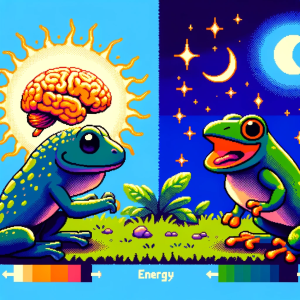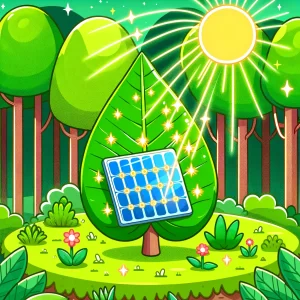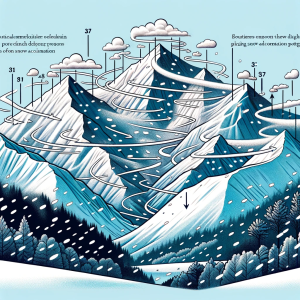
Powering the Future: Balancing Renewable Energy with Advanced Control Systems
As the world transitions towards sustainable energy sources, the challenge of balancing power generated from renewable sources like wind and solar with conventional energy sources has never been more critical. The intermittency of these renewable energies—where power generation can be unpredictable due to changing weather conditions—requires innovative solutions to maintain a stable and reliable power grid. This blog delves into the recent advances in automatic generation control (AGC) systems that help integrate renewable energy into our power grids, ensuring a sustainable and secure energy future.
Understanding the Challenge: Renewable Energy and Grid Stability
Renewable energy sources such as wind and solar power are pivotal in reducing our reliance on fossil fuels. Wind farms and solar panels have proliferated, driving down costs and increasing their contribution to the global energy mix. However, these sources are inherently intermittent. Wind doesn’t blow consistently, and solar panels don’t generate power at night or during cloudy days. This variability poses significant challenges for grid operators who need to balance supply and demand in real-time to maintain a stable grid frequency.
Traditionally, power grids have relied on reserves from conventional energy sources like coal and natural gas to manage fluctuations in supply and demand. However, as we integrate more renewable energy, relying solely on these conventional reserves is not only costly but also counterproductive to our sustainability goals. This is where advanced control systems, specifically AGC, come into play.
What is Automatic Generation Control (AGC)?
AGC is a crucial component of modern power systems. It functions to maintain the balance between power supply and demand, ensuring grid stability. AGC systems operate on a minute-by-minute basis, adjusting the output of power plants to match the real-time electricity demand and correct any deviations in grid frequency.
Traditionally, AGC systems have depended on reserves from conventional power plants. However, with the increasing penetration of renewable energy sources, there’s a growing need to incorporate these green energy sources into AGC operations to maintain grid stability effectively.
Integrating Solar and Wind Energy into AGC
Researchers have made significant strides in integrating solar and wind power into AGC systems. The key lies in using advanced control strategies that can predict and manage the variability of renewable energy.
- Solar Power Integration:
- De-loading Strategy: One method for integrating solar power into AGC is the de-loading strategy. This involves operating solar panels at less than their maximum capacity, maintaining a reserve that can be tapped into when needed to balance the grid. By not always running at full capacity, solar systems can provide a buffer that helps stabilize the grid during fluctuations.
- Advanced Forecasting: Accurate forecasting methods are crucial. By predicting solar power generation more precisely, AGC systems can better plan and manage the dispatch of power, ensuring a more stable grid.
- Wind Power Integration:
- Pitch Angle and Rotor Speed Control: Wind turbines can adjust the pitch of their blades and the speed of their rotors to control the amount of power they generate. This flexibility allows them to respond quickly to changes in grid demand, providing both primary and secondary frequency support.
- Dynamic Dispatch Strategies: AGC systems can dynamically adjust the power output of wind farms in real-time, integrating them more effectively with conventional power plants. This approach reduces the need for traditional reserves and enhances grid stability.
Case Study: Real-Time AGC with Wind and Thermal Power
A recent study simulated a power grid model incorporating wind and thermal power systems to demonstrate the effectiveness of integrating renewable energy into AGC operations. The model used an 8-bus, 5-machine setup, including wind turbines and thermal power plants. The AGC system dynamically adjusted the dispatch of power, optimizing the use of wind energy reserves alongside thermal generation.
The results were promising.
The study showed that using wind power in AGC operations significantly reduced forecasting errors and enhanced grid stability. By dynamically balancing power from wind and thermal sources, the grid could maintain operational security while reducing reliance on traditional, more polluting energy reserves.
The Future of AGC with Renewable Energy
The integration of renewable energy into AGC systems is a critical step towards a sustainable energy future. As technology advances, new approaches such as artificial intelligence (AI) and machine learning will likely play an increasingly important role. These technologies can improve the accuracy of energy forecasts, optimize control strategies, and enhance the overall efficiency of power systems.
By continuing to innovate and refine these systems, we can ensure that renewable energy sources not only contribute to but also enhance the reliability and stability of our power grids. This transition is essential for reducing our carbon footprint and combating climate change while providing secure and affordable energy for all.
Let us know in the comments (or have a lively dinner party discussion)
- How can advances in AI and machine learning further improve the integration of renewable energy into AGC systems?
- What are the potential challenges in scaling up these advanced AGC systems for larger power grids with higher renewable energy penetration?
Conclusion
Balancing the power grid with renewable energy sources is a complex but essential task for a sustainable future. Advanced AGC systems that integrate wind and solar power offer a promising solution to this challenge. By leveraging cutting-edge control strategies and real-time dynamic adjustments, these systems ensure grid stability, reduce reliance on traditional energy reserves, and pave the way for a greener energy landscape.
As we move forward, the continued development and implementation of these advanced control systems will be crucial in achieving a resilient and sustainable energy future.
Explore and Learn with Science
Dive into groundbreaking research and inspiring stories with ‘This Week in Science’! Perfect for teachers and science enthusiasts, our free weekly newsletter expands your horizons in teaching and learning. Join us today and reshape your engagement with science.
About the Author
Jon Scaccia, with a Ph.D. in clinical-community psychology and a research fellowship at the US Department of Health and Human Services with expertise in public health systems and quality programs. He specializes in implementing innovative, data-informed strategies to enhance community health and development. Jon helped develop the R=MC² readiness model, which aids organizations in effectively navigating change.



